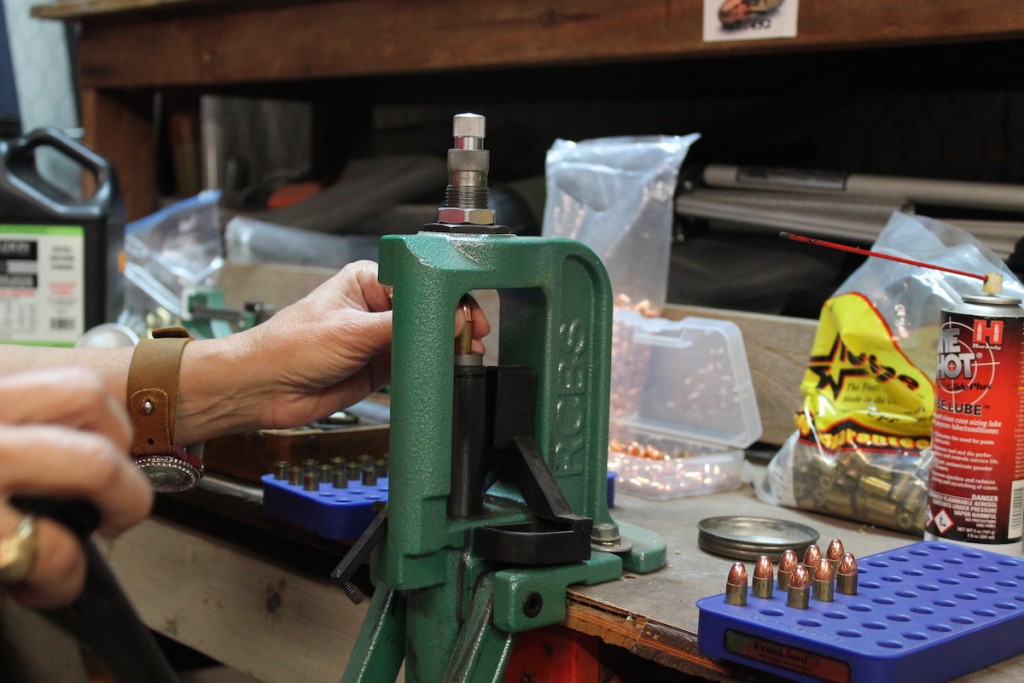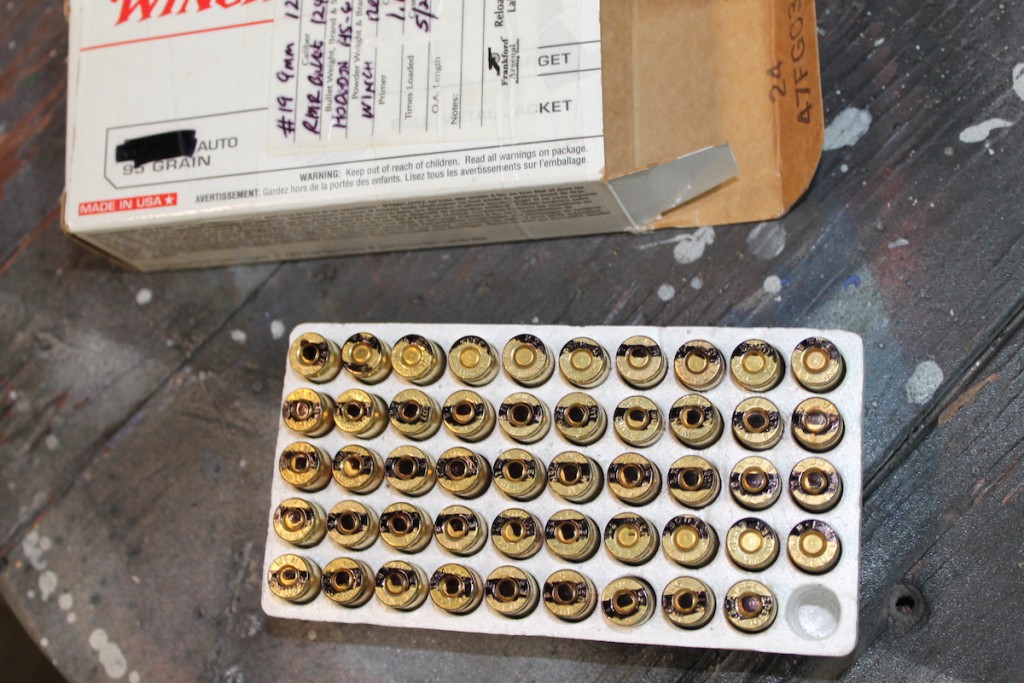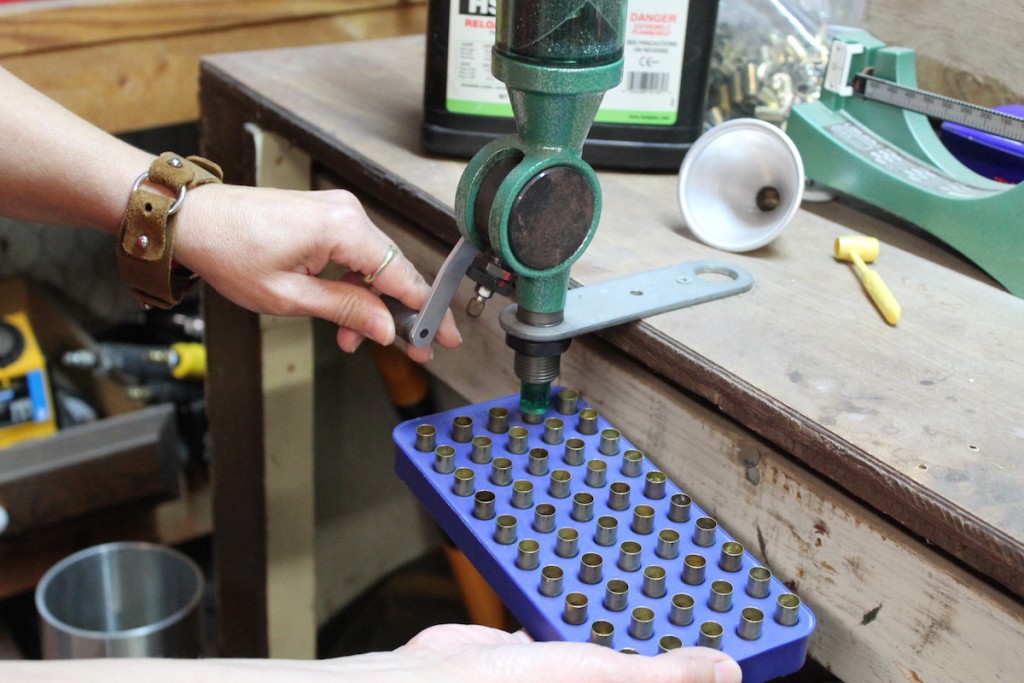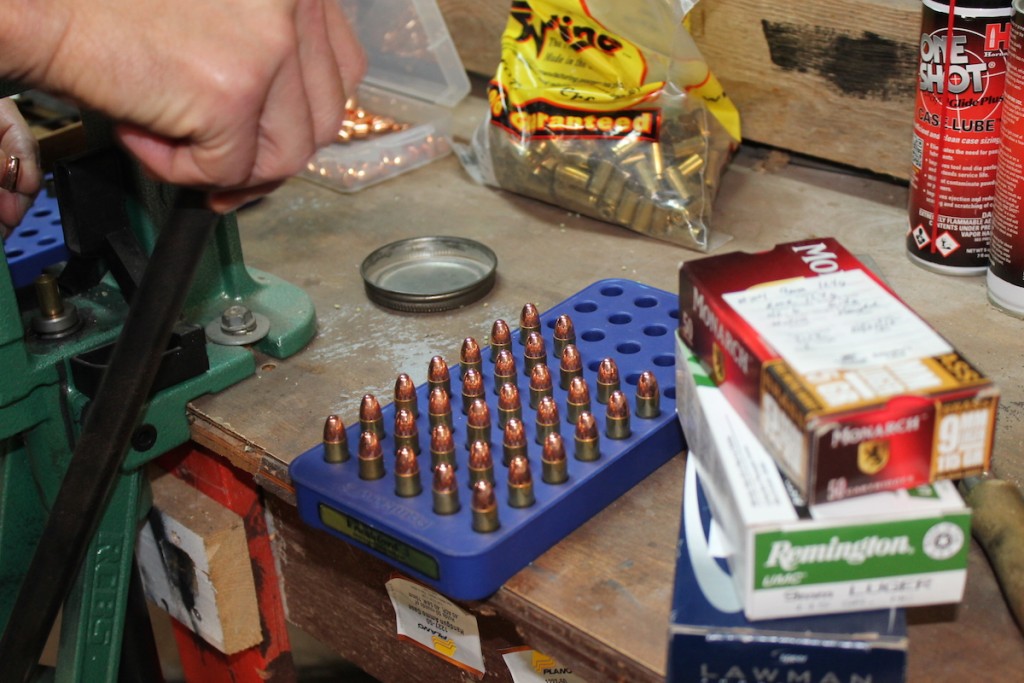(Editor’s note: This article was written by Sarah Farver)
A couple of years ago I got my husband a reloading set up for his birthday because I had a feeling it was something he’d really enjoy. Well, he did. So much so, that it turned into how he decompresses each day after work. Before long, he became pretty passionate about it and had learned quite a bit. All I had to do was express an interest and he was all about taking me under his wing.
If you’ve never reloaded before I want to caution you to FOLLOW DIRECTIONS. I realize most of you are men and that goes against the very fiber of which you’re made, but the manufacturers know of what they speak. Heed their advice. They have tested the propellant, the bullets, the casings and such, so just believe that they know what they’re talking about and enjoy success at reloading from the very beginning.
The steps are pretty simple, really. First, save old brass casings, because they aren’t cheap. You’ll be able to use them a few times over, so it’s just the smartest way to roll. Then you will clean them. (You wouldn’t want dirty ammo going in your gun, as it could muck it up.) Next, remove old primers and re-bell the casing, prime the casing, add the correct amount of propellant and then seat the bullet in its case. Then we measure to make sure the end result is the right length. You don’t want it too “tall” or “too short”, as both have bad consequences. All of the tables that are provided with the gunpowder (propellant) give specific amounts and measurements.
There are some things a person learns by listening or reading and other things you pick up along the way. Hopefully the following will help you learn from my mistakes, and save you a little moolah as well.
Go Standard
It’s a good idea to start with a standard re-loader, instead of a progressive one. The one we use is the Rock Chucker Supreme Press. It is pretty simple to use and the start-up costs were not too expensive. What’s more, the handle can be switched to be used by both left and right-handed people. This makes a difference for southpaws like myself.
Save Money with Generic
Generic bullets and casings have worked just fine. You can save a good bit if you shop around the internet and get some generic ones. The brass casings can be reused, but you need to examine them after each use to make sure they aren’t damaged or weakened. Generally, you can reuse a pistol casing 3-5 times. After we have reloaded a box or reused casings, we run a marker over them so we are sure to put sort them correctly after they have been shot.
Start with 9mm
We started with 9 mm because it seemed like an easier than the .45. It may be personal preference, but once we got the feel of it we quickly added other sizes.
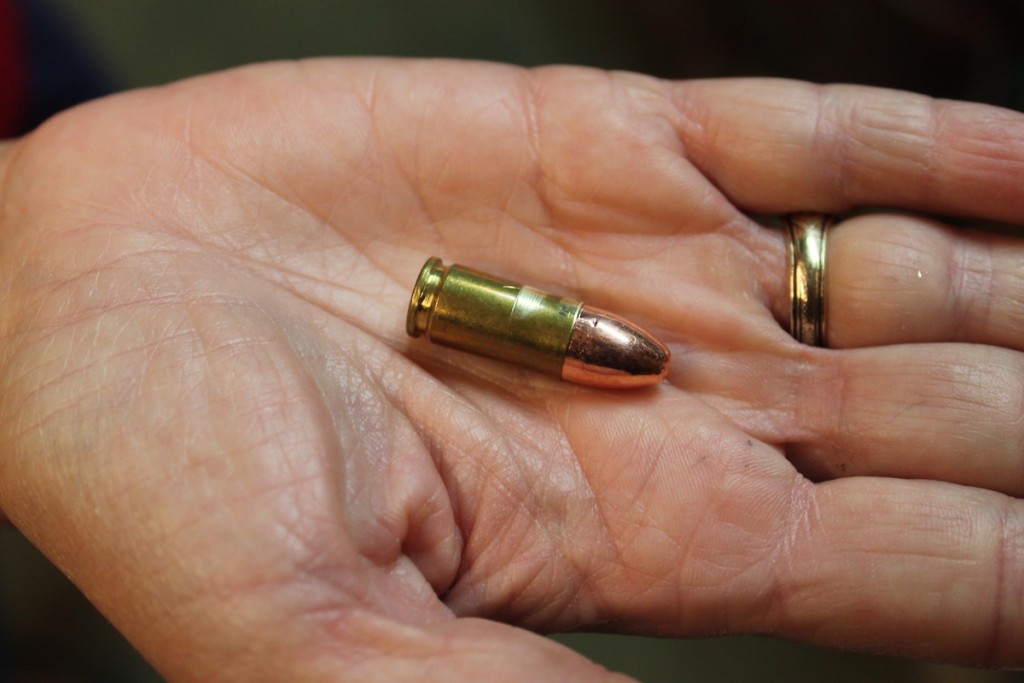
It’s okay to make mistakes. Here the bullet wasn’t properly seated. You can see the “ding” in the side of the casing, so it got trashed.
Check Primer Pocket Size
The primer is a tiny little cup of primer compound and when it is struck by the firing pin it causes the propellant to ignite. Even though it is a wee little thing, it is something that should be stored in a dry, cool place. Of late, we’ve been loading .45 ACP and learned the hard way to check the primer pocket size when you order them. Some manufacturers make .45 ACP with a small pistol primer and some are a bit larger. It will make a difference depending on which casing you have to plug it into, but I assure you that if you try to force the bigger diameter primer into the smaller primer pocket, it can cause a lot of frustration. What’s more, if that little sucker ignites, you might just wet your pants.
Measure!
Measure, measure and re-measure. Before you get started, set up the powder dispenser to whatever the manufacturer’s chart says. Download the chart from that company’s website and refer to it as you get things set up. After that step when you seat your bullet into its spot, measure the total length. Once you’ve done this and fired those bullets and are happy with how they are shooting you won’t need to constantly be measuring. At first it was a little tedious until I got into my groove with it.
Conclusion
Guys, I’d encourage you to take your wives out to the range with you. Make sure she is comfortable with handling a gun and encourage her to practice regularly. Then, gradually introduce her to reloading and you may just find that she enjoys it. If not, she may lie about it just to spend time doing something you enjoy. Either way it’s a win, right?

